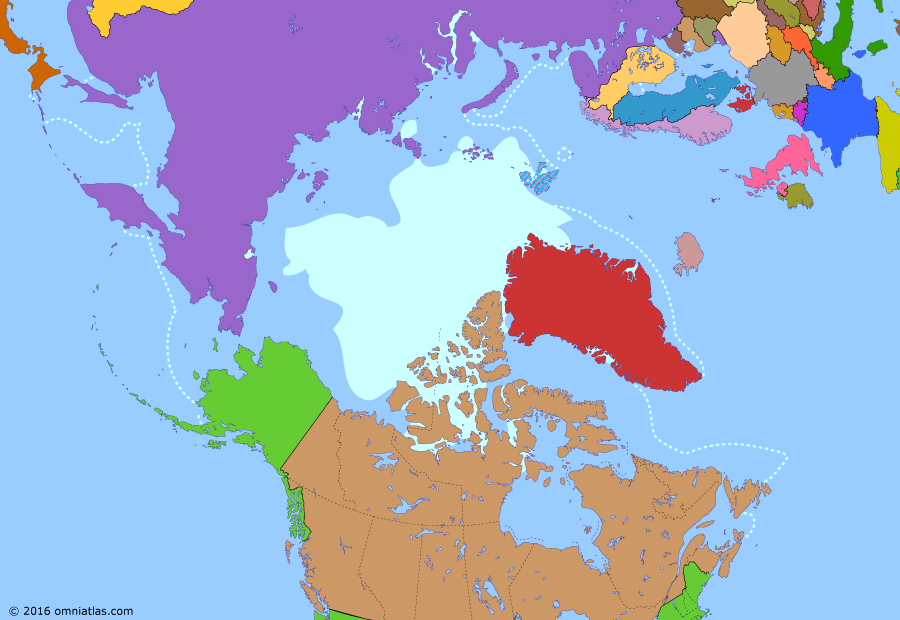the Arctic 2015: Climate Change
Climate Change
4 Apr 1949 North Atlantic Treaty
17 Aug 1977 Nuclear Standoff
12 Mar 2015 Climate Change
15 Jan 2024 The Arctic Today
The Cold War came to a swift end in the late 1980s with the collapse of the Soviet bloc. However, by now the Arctic itself seemed to be coming under increasing threat. Since 1979, global temperatures had been slowly rising and the average extent of Arctic sea ice receding. By 2015, the Northeast and Northwest Passages which had eluded navigators for centuries were now frequently open in summer and mineral reserves which had once been under ice were now accessible, leading to mounting territorial disputes between the five Arctic littoral nations.
